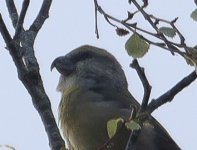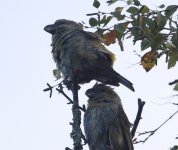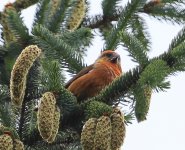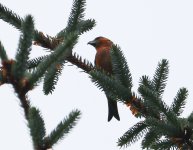Arbu
Well-known member
Seen a few miles out of Aviemore, last Thursday.
So can I take it that these are Scottish Crossbill? The bills are quite chunky and the adult female in the first picture does have something of a "bull" head. They seemed to be peeling bark off the tree they were in, which seemed unusual behaviour for crossbills to me.
More photos available if they would help.
So can I take it that these are Scottish Crossbill? The bills are quite chunky and the adult female in the first picture does have something of a "bull" head. They seemed to be peeling bark off the tree they were in, which seemed unusual behaviour for crossbills to me.
More photos available if they would help.








